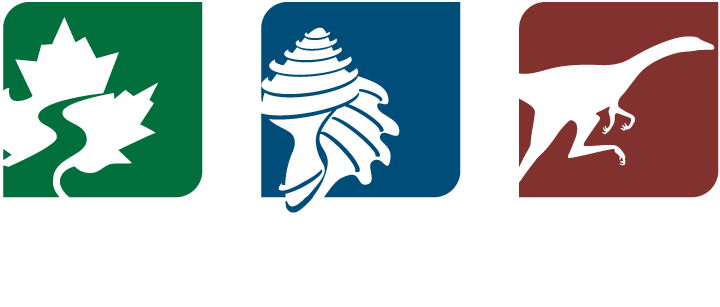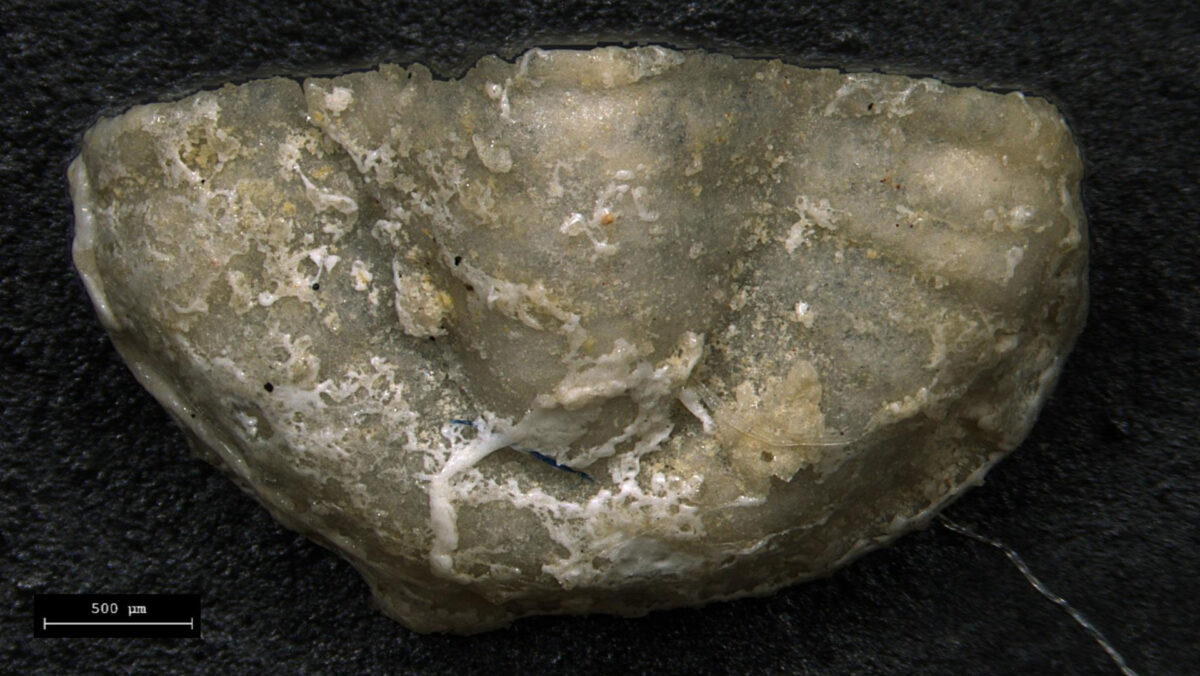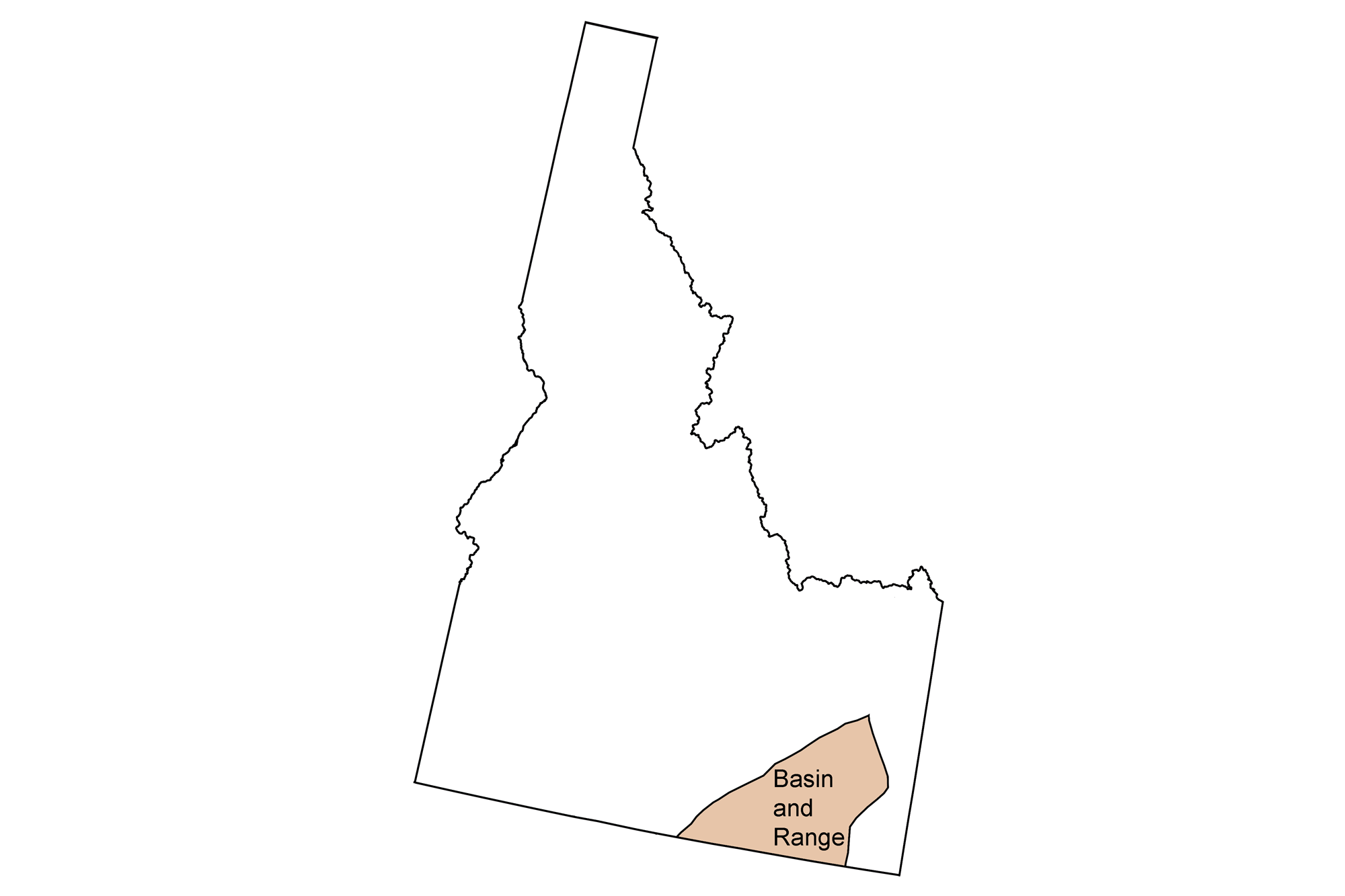
Page snapshot: Introduction to the fossils of the Basin and Range region of the northwest-central United States.
Topics covered on this page: Paleozoic fossils; Cambrian and Ordovician fossils; Carboniferous and Permian fossils; Mesozoic fossils; Cenozoic fossils; Resources.
Credits: Most of the text on this page comes from "Fossils of the Northwest Central US" by Warren D. Allmon and Dana S. Friend, chapter 3 in the The Teacher-Friendly Guide to the Earth Science of the Northwest Central US, edited by Mark D. Lucas, Robert M. Ross, and Andrielle N. Swaby (published in 2015 by the Paleontological Research Institution; currently out of print). The book was adapted for the web by Elizabeth J. Hermsen and Jonathan R. Hendricks in 2022. Changes include formatting and revisions to the text and images. Credits for individual images are given in figure captions.
Updates: Page last updated August 30, 2022.
Image above: Trilobite pygidium (Clelandia utahensis), Ordovician Garden City Formation, Franklin County, Idaho. Scale bar is 0.5 millimeters (0.02 inches). Photo of YPM IP 018195 by Jessica Utrup, 2019 (Yale Peabody Museum of Natural History on GBIF, CC0 1.0 Universal/public domain dedicaiton, image cropped and scale bar moved).
Paleozoic fossils
Cambrian and Ordovician fossils
The mountain ranges of southeastern Idaho contain thick sections of early Paleozoic marine sedimentary rocks, mostly sandstones and limestones, deposited during the Cambrian and Ordovician periods. Early Cambrian rocks (variously assigned to the Brigham, Camelback Mountain, and Gibson Jack formations) contain Skolithos and other Cambrian trace fossils, as well as occasional trilobites. Sponge-like archaeocyathids are present in shale and limestone formations. The Ordovician Swan Peak Quartzite contains abundant large trace fossils, as well as trilobites and brachiopods.
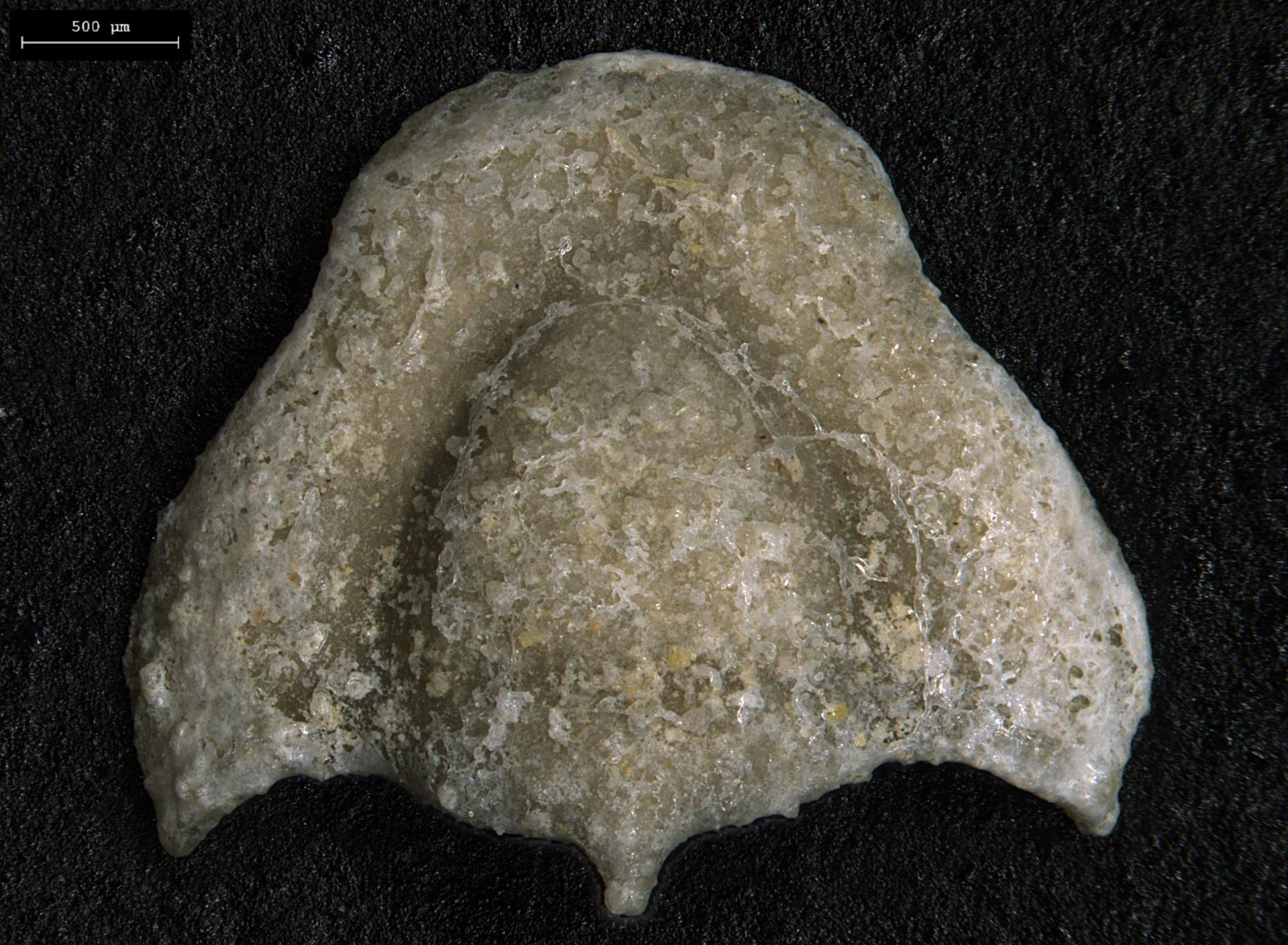
Trilobite cepahlon (Clelandia utahensis), Ordovician Garden City Formation, Franklin County, Idaho. Scale bar is 0.5 millimeters (0.02 inches). Photo of YPM IP 0181952 by Jessica Utrup, 2019 (Yale Peabody Museum of Natural History on GBIF, CC0 1.0 Universal/public domain dedicaiton).
Carboniferous and Permian fossils
The most abundant Paleozoic rocks in this region are early Carboniferous (Mississippian) marine sediments consisting mostly of carbonates, but also some sandstones and shales. Mississippian limestones (known variously as the Madison, Mission Canyon, or Lodgepole formations) contain abundant horn corals, tabulate corals, and spiriferid brachiopods. These limestones represent a warm, clear-water carbonate environment.
The late Carboniferous (Pennsylvanian) is represented by the same marine sediments, but both the variety and quantity of fossils are inferior to those found in Mississippian strata. Nonetheless, fossil algae, foraminifera, bryozoa, brachiopods, crinoids, and corals have been reported from sediments of this age.
Tooth whorls of Helicoprion, an ancient shark, occur in the Phosphoria Formation.
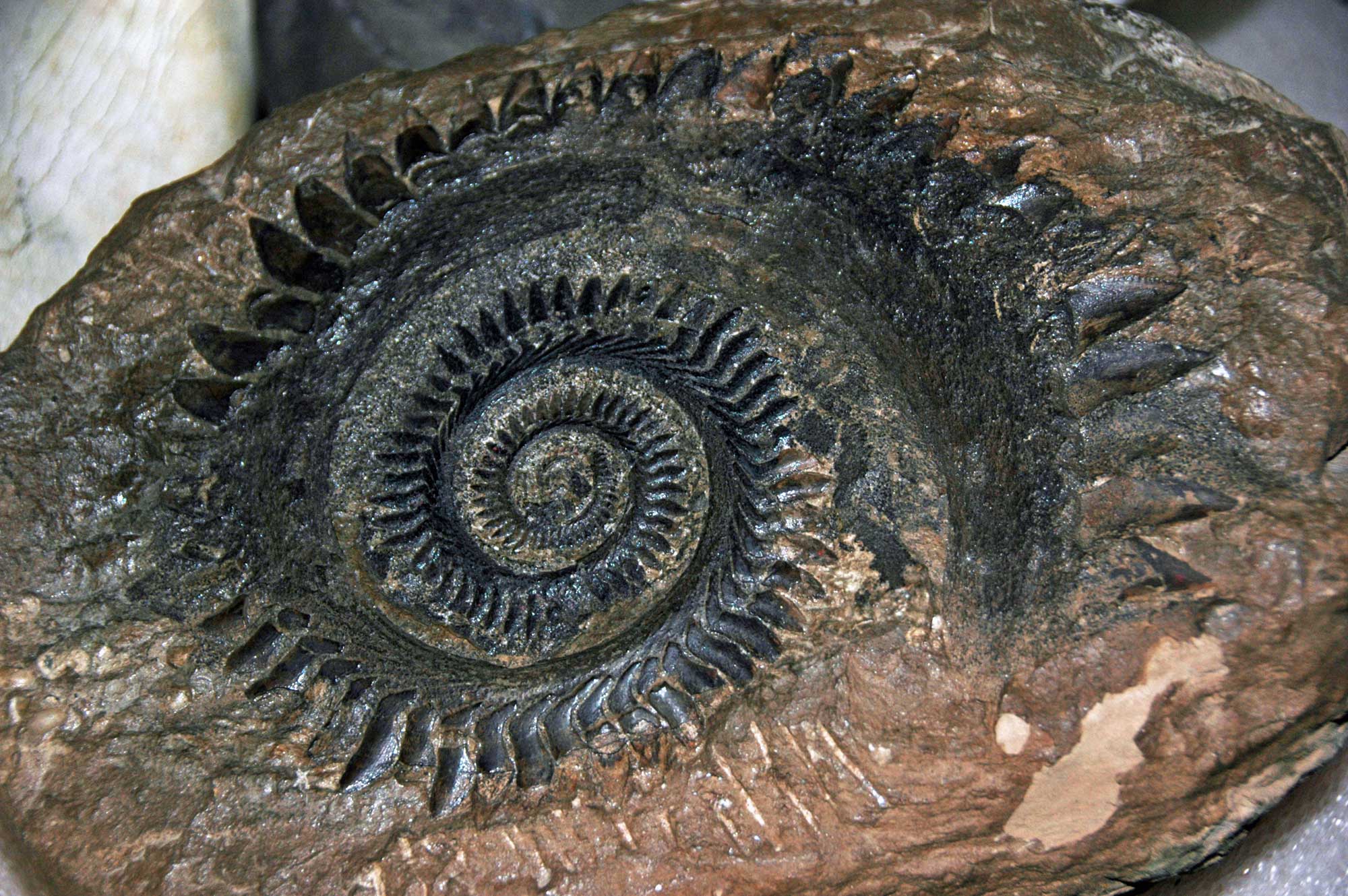
Tooth whorl from a shart (Helicoprion), Permian Phosphoria Formation, Bingham County, Idaho. Photo by James St. John (flickr, Creative Commons Attribution 2.0 Generic license, image resized).
Mesozoic fossils
Southeastern Idaho also contains a thick sequence of early Triassic marine strata, and several horizons (especially the Thaynes and Dinwoody formations) contain biostratigraphically significant ammonoids.
Overlying Jurassic rocks, especially the Twin Creek Limestone, contain well-preserved ammonoids and bivalves.
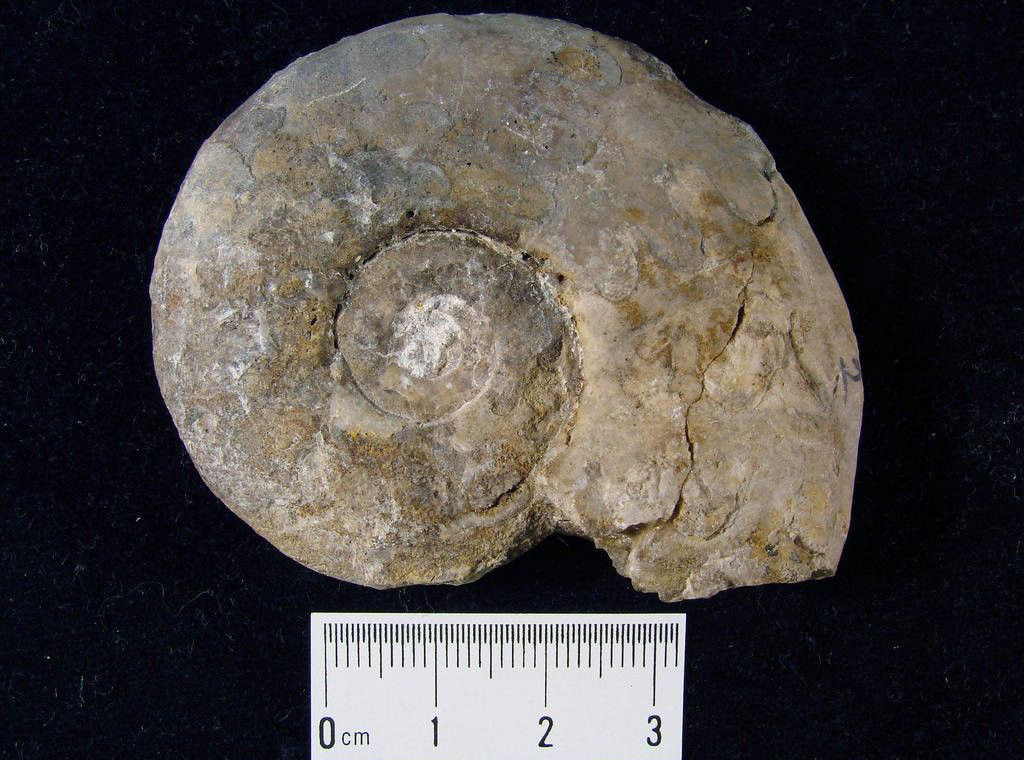
An ammonoid (Flemingites russelli), Triassic, Caribou County, Idaho. Photo of YPM IP 514727 by Jessica Utrup, 2011 (Yale Peabody Museum of Natural History on GBIF, CC0 1.0 Universal/public domain dedicaiton).
Cenozoic fossils
Sand and gravel deposits in southeastern Idaho that were laid down in association with glacial Lake Bonneville have yielded fossils of Pleistocene bison, camels, muskoxen, and horses.
Resources
Resources from the Paleontological Research Institution & partners
Digital Atlas of Ancient Life Virtual Collection: https://www.digitalatlasofancientlife.org/vc/ (Virtual fossil collection featuring 3D models of fossil specimens sorted by group)
Digital Encyclopedia of Ancient Life: https://www.digitalatlasofancientlife.org/learn/
Earth@Home: Earth Science of the South-central United States: Fossils of the Basin and Range (continues coverage of the Basin in Range in far western Texas): https://earthathome.org/hoe/sc/fossils-br
Earth@Home: Earth Science of the Southwestern United States: Fossils of the Basin and Range (continues coverage of the Basin in Range in Arizona, New Mexico, and Utah): https://earthathome.org/hoe/sw/fossils-br
Earth@Home: Earth Science of the Western United States: Fossils of the Basin and Range (continues coverage of the Basin and Range in California, Nevada, and Oregon): https://earthathome.org/hoe/w/fossils-br/
Earth@Home: Quick guide to common fossils: https://earthathome.org/quick-faqs/quick-guide-common-fossils/
